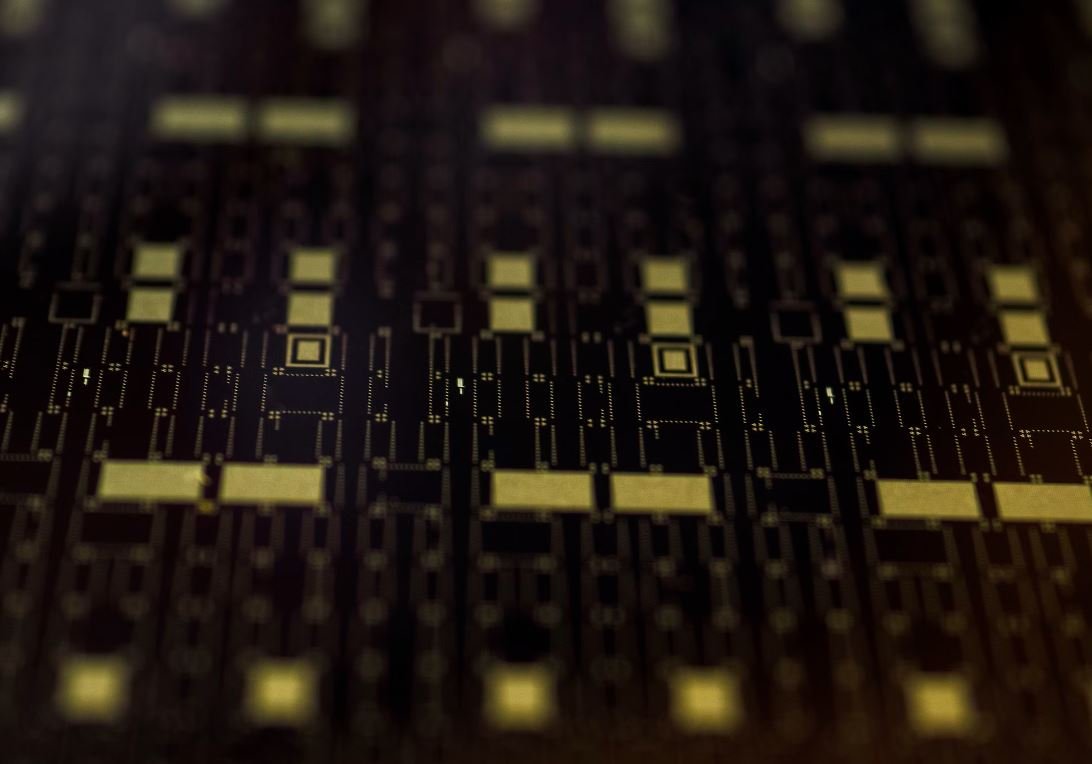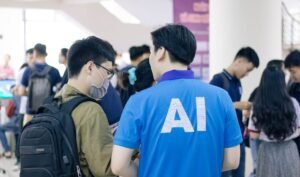Neural Network vs Deep Learning
In the world of artificial intelligence, both neural networks and deep learning play crucial roles. While these terms are often used interchangeably, it is important to understand the distinctions between them. This article aims to shed light on the differences and similarities, enabling a better comprehension of the field.
Key Takeaways:
- Neural networks and deep learning are distinct concepts within the field of artificial intelligence.
- Neural networks mimic the functionality of the human brain, while deep learning is a subset of machine learning that employs neural networks to process vast amounts of data.
Understanding Neural Networks
A neural network is a computational model that replicates the working of the human brain. It consists of interconnected nodes, or artificial neurons, which process and transmit information. These networks are organized into layers – an input layer, one or more hidden layers, and an output layer.
*Did you know? Neural networks have been around since the 1950s, but recent advancements in computation power and data availability have propelled their application in various fields.*
The Essence of Deep Learning
Deep learning, on the other hand, is a subfield of machine learning that employs neural networks to analyze large amounts of data automatically. It uses multiple layers of artificial neurons to extract increasingly complex features from the input data, allowing for more refined predictions and recognition.
*Did you know? Deep learning has revolutionized numerous industries, including healthcare, finance, and autonomous driving, by providing unparalleled accuracy in tasks such as image recognition and natural language processing.*
Neural Network vs Deep Learning – A Comparison
| Neural Network | Deep Learning |
|---|---|
| Works on a smaller scale of data analysis. | Efficiently processes massive amounts of data. |
| Simulates the human brain. | Uses neural networks to achieve complex outcomes. |
| Generally requires manual feature engineering. | Automatically extracts meaningful features from data. |
Advantages of Deep Learning
- Ability to learn from vast amounts of data, leading to more accurate predictions.
- Elimination of the need for manual feature engineering, reducing human effort.
- Flexibility to handle complex tasks due to the hierarchical structure of deep neural networks.
Deep Learning Applications
Deep learning finds applications in a wide range of fields, including:
- Image and speech recognition
- Natural language processing
- Autonomous driving
- Medical diagnosis and treatment
| Field | Deep Learning Application |
|---|---|
| Finance | Stock market prediction |
| Entertainment | Recommendation systems for movies and music |
| E-commerce | Customer behavior analysis |
Future Prospects
The field of artificial intelligence continues to rapidly evolve, with both neural networks and deep learning at the forefront of groundbreaking developments. As technology and research progress, we can look forward to even more advanced applications and innovations in the coming years.

Common Misconceptions
1. Neural Networks and Deep Learning are the same thing
One common misconception is that neural networks and deep learning are interchangeable terms referring to the same thing. While they are related concepts, they are not identical.
- Neural Networks are a type of algorithm that mimic the functioning of the human brain.
- Deep Learning is a subfield of machine learning that utilizes neural networks to analyze and process complex datasets.
- Deep learning is a broader concept that encompasses neural networks as one of its essential components.
2. Neural Networks and Deep Learning only work with images
Another misconception is that neural networks and deep learning are solely used for image recognition tasks. Although they excel in areas like computer vision due to their ability to discern intricate patterns, their applications are not limited to images only.
- Neural networks and deep learning methods are widely used in natural language processing tasks, such as sentiment analysis, text generation, and language translation.
- They are also valuable for time series analysis, anomaly detection, and speech recognition.
- Neural networks can handle a variety of data types, including images, text, audio, and numerical data.
3. Neural Networks and Deep Learning are black boxes
It is often assumed that neural networks and deep learning models are inscrutable black boxes, making it impossible to understand how they arrive at their decisions. While they can be complex, explanations for their outputs can be derived.
- Researchers have developed techniques like attention mechanisms and saliency maps that highlight the important features considered by the network during decision-making.
- Post-hoc interpretation methods, such as LIME and SHAP, help elucidate the model’s behavior by approximating its decision boundary.
- Deep learning models can provide valuable insights through visualization techniques that explain their inner workings.
4. Neural Networks and Deep Learning are flawless
There is a common misconception that neural networks and deep learning methods produce perfect results with 100% accuracy. However, like any other algorithm, they have limitations and can make mistakes.
- No model is exempt from overfitting or underfitting, which can impact the model’s generalization ability.
- Training deep learning models requires significant computational resources, expertise, and careful tuning to achieve desirable performance.
- Neural networks might fail to generalize well to unseen data if the training set is not representative of the target population.
5. Neural Networks and Deep Learning will replace human intelligence
Perhaps the most far-fetched misconception is that neural networks and deep learning will render human intelligence obsolete. While they continue to advance AI capabilities, humans have their unique cognitive abilities that cannot be replicated.
- Deep learning models depend on the availability of extensive and labeled training data, while humans can make sense of new scenarios with limited instances.
- Human cognition involves reasoning, intuition, empathy, and creativity, which are crucial for addressing complex problems that cannot be solved solely by algorithms.
- Neural networks and deep learning systems are tools that can complement human intelligence, but they cannot fully replicate or replace it.

Introduction
Neural networks and deep learning are two concepts that have revolutionized the field of artificial intelligence. While they are often used interchangeably, there are key differences between the two. Neural networks are a type of machine learning model inspired by the structure of the human brain, whereas deep learning refers to a specific type of neural network architecture that is capable of automatically learning representations from data. In this article, we will explore the differences between neural networks and deep learning through a series of interesting tables.
Table 1: Definition
| Neural Network | Deep Learning |
|---|---|
| A machine learning model composed of interconnected layers of artificial neurons. | A subset of neural networks that use multiple layers to automatically learn hierarchical representations. |
Table 2: Complexity
| Neural Network | Deep Learning |
|---|---|
| Can have a few to hundreds of artificial neurons. | Can have millions to billions of artificial neurons in complex architectures. |
Table 3: Training
| Neural Network | Deep Learning |
|---|---|
| Requires explicit feature engineering and manual selection of model architecture. | Capable of automatically learning features from raw data, reducing the need for manual feature engineering. |
Table 4: Applications
| Neural Network | Deep Learning |
|---|---|
| Used in speech recognition, image classification, and sentiment analysis. | Highly effective in natural language processing, computer vision, and autonomous systems. |
Table 5: Training Speed
| Neural Network | Deep Learning |
|---|---|
| Training can be relatively slow, depending on the complexity of the model and size of the data. | Deep learning models can be trained efficiently using parallel processing on GPU accelerators. |
Table 6: Interpretability
| Neural Network | Deep Learning |
|---|---|
| Interpreting the decision-making process of neural networks can be challenging due to their complexity. | Deep learning models often lack interpretability, making it difficult to understand their inner workings. |
Table 7: Deep Learning Architectures
| Neural Network | Deep Learning |
|---|---|
| Can have a few types of network architectures, such as feedforward or recurrent neural networks. | Includes various complex architectures like Convolutional Neural Networks (CNNs) and Recurrent Neural Networks (RNNs). |
Table 8: Data Requirements
| Neural Network | Deep Learning |
|---|---|
| May require large amounts of labeled data to achieve good performance. | Deep learning models can leverage big datasets for optimal performance. |
Table 9: Error Handling
| Neural Network | Deep Learning |
|---|---|
| Less robust to noisy data, resulting in potential performance degradation. | Deep learning models can handle noisy data better due to their hierarchical feature representation. |
Table 10: Computational Resources
| Neural Network | Deep Learning |
|---|---|
| Can typically be trained on traditional CPUs. | Deep learning models require powerful GPUs or specialized hardware for efficient training. |
Conclusion
Neural networks and deep learning have transformed the field of artificial intelligence, enabling significant advancements in a wide range of applications. Neural networks serve as the foundation, while deep learning takes it to new levels by automatically learning complex representations from raw data. However, both approaches have their strengths and weaknesses in terms of complexity, training, interpretability, and performance on different types of data. Understanding these differences is crucial for leveraging the power of neural networks and deep learning to develop intelligent systems that make a positive impact on our world.
Frequently Asked Questions
What is the difference between a neural network and deep learning?
Neural networks and deep learning are related but not the same. A neural network is a computational model inspired by the human brain, while deep learning is a subset of machine learning that uses neural networks with multiple layers to learn and make predictions.
How does a neural network work?
A neural network consists of interconnected nodes called neurons that process and transmit information. Input data is fed into the network, and through a process of weighting and activation functions, the network calculates an output. This calculation is iteratively repeated until the network’s predictions are optimized.
What are the advantages of deep learning?
Deep learning has several advantages, including the ability to automatically learn feature representations from raw data, handle large-scale datasets, and make complex predictions. It is particularly effective in tasks such as image and speech recognition, natural language processing, and recommendation systems.
Can neural networks and deep learning be used in different domains?
Yes, neural networks and deep learning can be applied to various domains. They have been successfully used in fields such as computer vision, healthcare, finance, robotics, and more. Their versatility and ability to extract meaningful patterns make them suitable for a wide range of applications.
What are some popular deep learning architectures?
Popular architectures in deep learning include convolutional neural networks (CNNs) for image processing, recurrent neural networks (RNNs) for sequential data, and generative adversarial networks (GANs) for generating new data. Each architecture is designed to address specific challenges in different types of data.
Can deep learning models be trained without labeled data?
Training deep learning models typically requires labeled data, as they learn patterns and make predictions based on known output labels. However, there are techniques such as semi-supervised learning and unsupervised learning that can leverage unlabeled or partially labeled data to train deep learning models more efficiently.
What are some potential challenges of using deep learning?
Deep learning can face challenges such as the need for massive amounts of training data, high computational requirements, and potential overfitting to the training data. Interpreting the internal workings of deep learning models and explaining their decisions is also a challenge known as the “black box” problem.
Is deep learning the same as artificial intelligence?
No, deep learning is a subset of artificial intelligence (AI). AI encompasses a broader concept of simulating intelligent behavior in machines, while deep learning focuses on using neural networks with multiple layers to learn from data and make predictions.
What programming languages are commonly used in deep learning?
Python is the most commonly used programming language for deep learning due to its extensive libraries and frameworks such as TensorFlow, PyTorch, and Keras. However, other languages like R and Julia also have deep learning libraries available for use.
Are there any limitations to deep learning?
Deep learning has limitations, including the need for vast amounts of data, the complexity of model interpretation, and the computational power required. It may also struggle with certain types of data, such as rare events or situations with limited training samples. Researchers are actively working on addressing these limitations.




